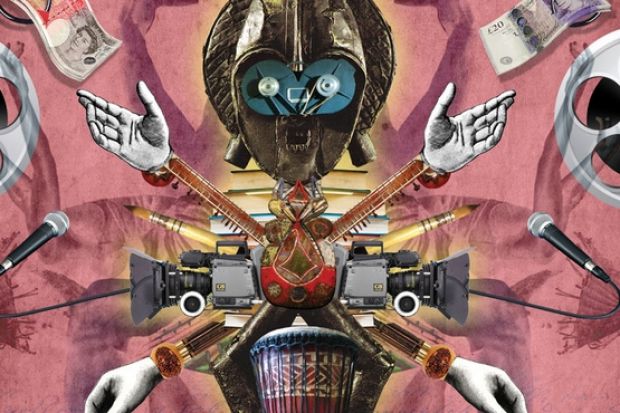In the 1991 New Zealand film Te Rua, a Maori performance poet incites an ambush of Berlin’s ethnology museum to force the repatriation of three irreplaceable tribal carvings. This intervention seems necessary and just in the politicised tale that unfolds, yet the activists win our support on aesthetic rather than moral grounds. They are creative, daring and determined to make a difference - much like the film as a whole. Its writer-director, the late Barry Barclay, was a pioneer in indigenous cinema: he saw the cunning ability of the arts to infiltrate hierarchies of power.
Arts researchers in the UK could do well to embrace this kind of vision as we move through another period of assessment-induced nervousness about the value, and now the impact, of our scholarship. We worry that our research will be channelled into narrowly instrumental ends, that grants will be even harder to win, and that we’ll lose out to the sciences in universities’ distribution of quality-related funding after the research excellence framework.
One source of reassurance should be the European Research Council’s recent efforts to encourage more proposals from scholars in the humanities and social sciences. The average success rates for ERC awards in this broad field are 14.2 per cent for “advanced investigator” grants and 10.7 per cent for “starting independent researcher” grants, which roughly matches figures for the “hard” sciences. Until 2012, however, only one to three grants per year at each level had been allocated to projects identifiably focused on literary, visual and performance-based arts. Senior scholars made better inroads last year, with six awards going to projects on subjects as varied as Afro-diasporic rhythm cultures, Oceanic art and broadcast television, but no starting grants were awarded to junior arts researchers.
In total, these awards represent about 4 per cent of successful social sciences and humanities bids and less than 1 per cent of the overall 3,444 tally since the ERC was launched in 2007. Taking into account the subject range in each domain, the arts should have garnered at least twice as many awards.
It is tempting to presume that these figures reflect a fundamental bias, despite the openness of the criteria for ERC funding, which cites “excellence” as the sole basis for success. Why else should arts researchers appear to fare so badly? Could it be that we are destined to be the poor cousins of scientists because we expect to be? The humanities (as a broader grouping) have been sluggish in responding to ERC funding initiatives. We make fewer applications proportionally than most other disciplines and have not developed systems to hone winning proposals. The ERC rewards bold vision and unconventional approaches, accepting the risks they entail. This remit should suit arts researchers well, but it seems that we lack the nerve to aim high or the craft to sway decisions in our favour.
I’m not embarrassed to tell people that my own ERC-funded project, which examines indigenous performance as both an aesthetic practice and a vehicle for cultural action in our unevenly resourced world, grew from a failed bid to the Arts and Humanities Research Council. The assessors had essentially asked why Britons should care about this research. For the revamped proposal, I put my energies into showing why everyone should care, expanding the project’s scale to support claims for its significance - which, in the ERC’s terms, relates not to impact but to big thinking.
Strategic interpretation and argumentation - skills the humanities foster - equip us to compete for funding in sometimes surprising ways. Recently, my research team won a proof of concept grant to expand the reach and impact of our ERC project. The scheme is cast in the language of commercialisation and clearly targets the sciences. We wanted to develop an interactive digital version of our upcoming performance-based exhibition and to facilitate dialogues between indigenous artists and European cultural institutions. These activities didn’t seem to match the remit.
With effort, we managed to pitch our concepts in the idiom of the market, while claiming social rather than economic value. The insight by Geoffrey Crossick - who is currently leading the AHRC’s Cultural Value Project - that new knowledge in the arts comes from social interactions, rather than stand-alone innovations, supplied a crucial lead. We also had something else up our sleeve: a community of creative collaborators whose métier it is to make an impact of another kind - a striking impression, an appeal to the senses. As part of our project, two indigenous performance-makers will take up artists’ residencies in European museums later this year.
Barclay’s film imagines the generative changes such incursions could initiate. Those of us who analyse the dense creative tissue of human societies should not be hesitant to trust that cunning.
Register to continue
Why register?
- Registration is free and only takes a moment
- Once registered, you can read 3 articles a month
- Sign up for our newsletter
Subscribe
Or subscribe for unlimited access to:
- Unlimited access to news, views, insights & reviews
- Digital editions
- Digital access to THE’s university and college rankings analysis
Already registered or a current subscriber? Login
